What Is Your Rose Bush Trying to Tell You?
Updated: Aug. 01, 2023
For proper rose bush care, you need to speak your rose's language! Discover common rose problems and solutions, and monitor for rose diseases.
Rose Bush Care: Diagnose the Problem
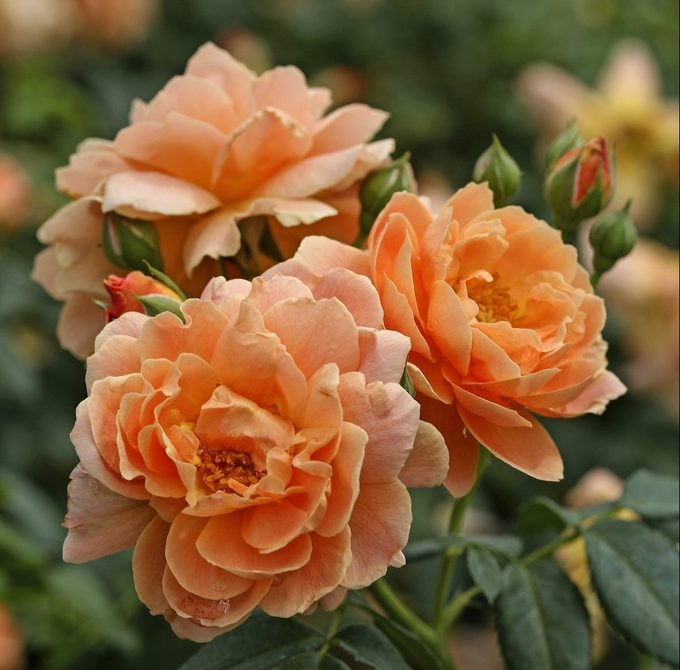
It’s challenging to diagnose the visual irregularities on your roses. To figure out your rose problems and solutions, use these clues and rose bush care tips from garden pros to get started with a diagnosis.
Learn everything you need to know about growing roses.
Rose Bush Problem #1
IF YOUR ROSE: Grows rampant with few flowers
IT COULD NEED: Pruning.
For modern shrub and hybrid tea roses, simple pruning—best done before leaves emerge—promotes air circulation, bushy growth and lusty flowering. “A rose is just a blooming shrub, and you can treat it as that,” says Teresa Byington, a consulting rosarian for the American Rose Society who gardens in Indiana. For these types, the typical timing cue, she says, is when forsythia is blooming.
Remove dead, broken, crossing or diseased canes, and take down the rest by one-third of the plant’s height, she says. Single-blooming heirloom and species roses can be pruned for shape and deadheading after blooming, and climbers have their own regimen.
Roses not blooming? Find out what to do.
Rose Bush Problem #2
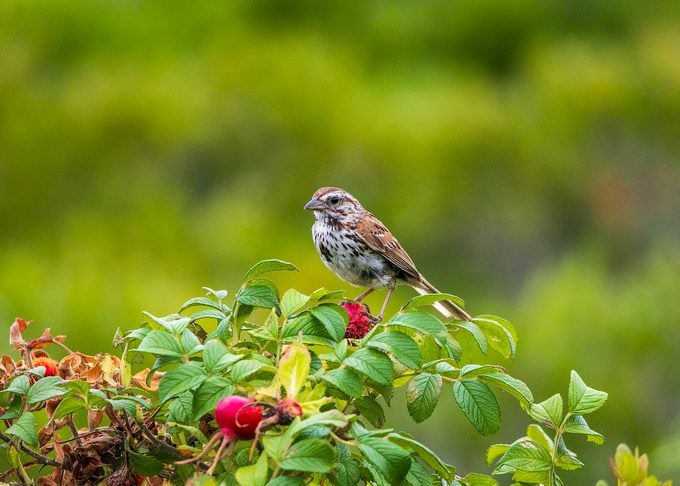
IF YOUR ROSE: Produces hard seed heads
DO THIS: Leave these rose hips for the birds or make tea.
Rose hips are the fruit that roses produce after flowering. They have up to 20 times the vitamin C of an orange and add a floral note to teas. Rose hips look stunning in fall arrangements, and birds love to snack on them. Teresa recommends deadheading flowers until about six weeks before your first frost date, and then let hips form to help the plant prepare for winter.
These are the top 10 roses for gardeners to grow.
Rose Bush Problem #3
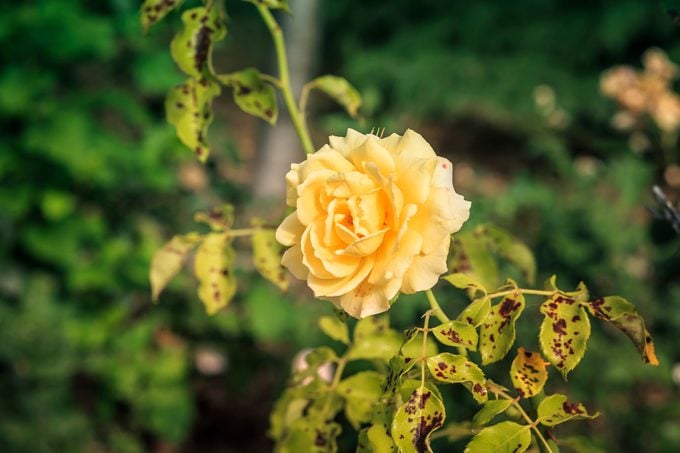
IF YOUR ROSE: Develops black spots on the leaves
IT COULD BE: Black spot disease.
“Black spot is a fungal disease that’s spread in water when leaves are wet. It usually starts at the plant’s base and works upward,” says Stephen Scanniello, curator of the Peggy Rockefeller Rose Garden at The New York Botanical Garden and author of two rose books.
Black spot disease will defoliate—but not kill—the plant. Allowing ventilation through both pruning and plant spacing is key, as is removing the affected foliage to prevent the spread of the fungus, he says. Also, seek out resistant rose varieties—like the Knock Out rose.
Psst—roses love garlic: here’s why.
Rose Bush Problem #4
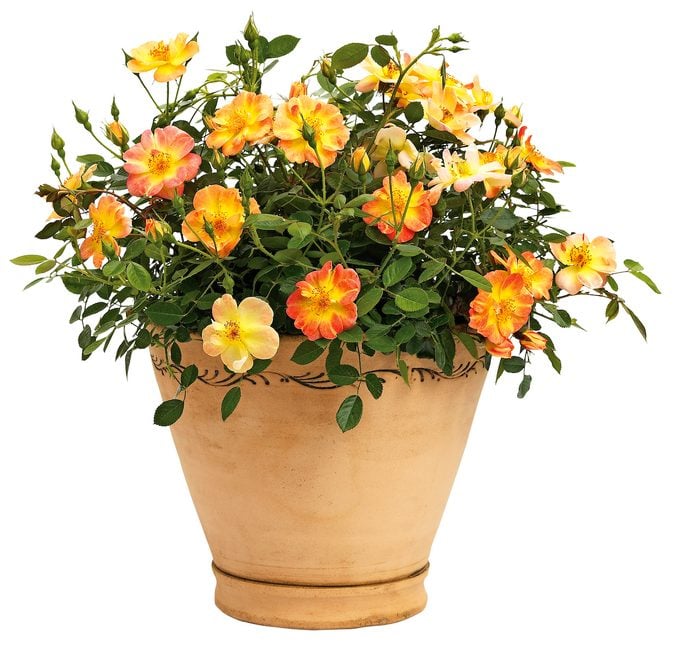
IF YOUR ROSE: Exhibits significant yellowing or dropping of leaves.
IT COULD BE: Soil issues.
“Usually underwatering and overwatering have the same symptoms,” Stephen says. “Any kind of sudden leaf drop or leaves turning yellow indicates something is wrong with the soil, such as lack of drainage or chlorosis, which is a lack of iron.” He recommends regular soil testing to learn what’s happening before addressing any issues.
Learn when to fertilize roses and peonies.
Rose Bush Problem #5
IF YOUR ROSE: Has gangly new growth and a different flower color.
IT COULD BE: Graft issues.
In this case, the rootstock variety has taken over your grafted rose and is reaching for the sky. You can buy own-root roses, which are typically hardier, but on grafted roses, bury the knobby union 2 inches below the surface, Teresa says.
Find out how to grow roses from cuttings. While you’re at it, you might like to admire the many colors of a Tuscan Sun rose, too.
Rose Problems and Solutions: Disease Cues to Look for
Pay attention to these common rose problems for hints that your plant is sick.
Downy Mildew
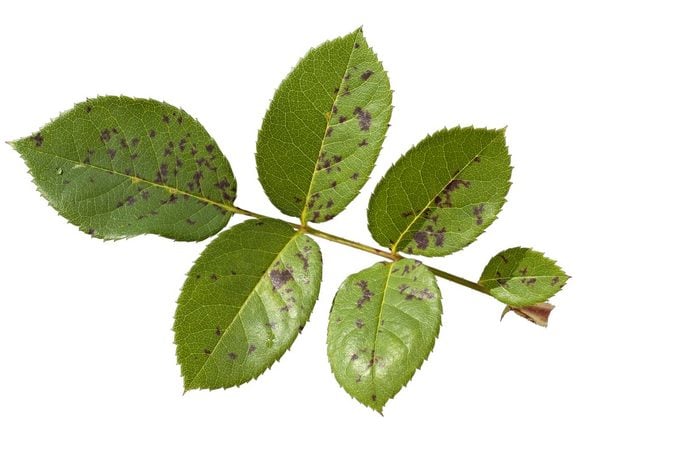
Red stains or bumps on the canes results from downy mildew.
Rose Rosette Disease

Broom growth or thick canes with clustered thorns indicates rose rosette disease, which is contagious. Dispose of the plants and report to roserosette.org/reporting.
Powdery Mildew
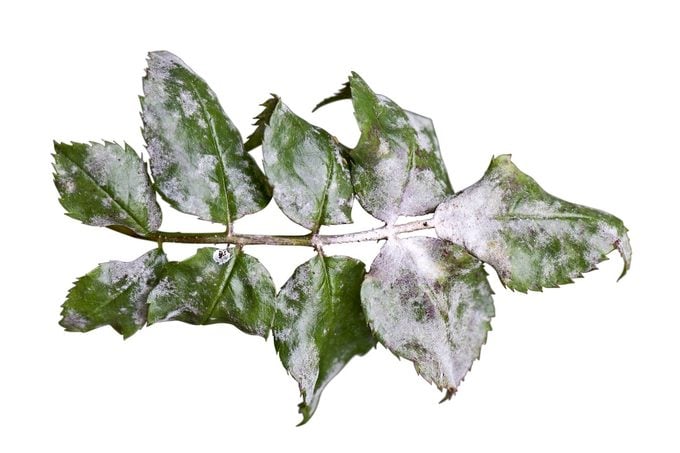
Fuzzy white patches or spots on the leaves indicates powdery mildew.
Next, discover the best types of roses for every garden.




















